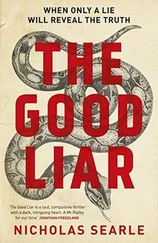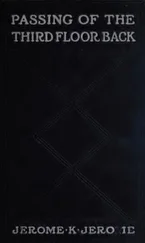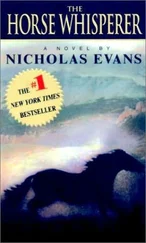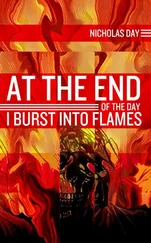He had seen these films and then, just as interest began to grow in the so-called lost films of certain contemporary directors, destroyed them, the best of them. Burned them, so it was said, in a simple metal barrel behind the library loading dock. This would have been sometime in the early 2000s and was documented by an analog film group on campus called Radiant Union, one of whose members ended up serving as the editor of the journal that was responsible for sending me to see Laing in the first place. Radiant Union was, as far as I know (which is to say as far as anything can be known about anything) a group of cinephile graduate students who, having become disenchanted with theory, attempted to break free from what they called flying signifiers , which turned out to be the name of their pathetic little fanzine, mimeographed and stapled in the old “analog” way and distributed mostly amongst themselves. And it is in the poorly designed (which may have been, now that I’m committing these thoughts to the screen, deliberate, as a way to disguise the revolutionary nature of the ideas) pages of flying signifiers that information about Roberto Acestes Laing’s stupefying “film dispreservation” (the euphemistic term for “film destruction” used by the journal’s editors) are documented. In the pages of issues one through seven of that fanzine (for that’s all they managed to produce) who knows where fact ended and myth began? As for me, all I can say with certainty is that Edison — whom I knew from my own failed days as a post-graduate and… poor Edison! whose magnificent lisp, which he had decided to embrace rather than suppress, was always subverting his cause rather than aiding it — gave me his copies of flying signifiers , copies that he had acquired through an elaborate, off-line bartering system and that provided first-hand details regarding Laing’s destruction by fire of the most valuable films in his collection.
In truth, Laing had existed at the frayed edges of my imagination for a long time. First as a rumor or ghost — like that fleeting something you see, that moth-like smudge, out of the corner of your eye — and then gradually as a more substantial shape as if the thought of him had transformed into a tiny sliver that had lodged itself in my brain. It was in the credits where I spotted him first, the credits of a crazy, anarchist midnight movie about skiing, and I mean anarchist in the discombobulation of the film itself, its assembly or editing, which was all mixed up. In fact, it wasn’t really clear whether it was a documentary or a narrative film, because some of the sequences showing dangerously fast downhill skiing were voiced over in a very hushed, downbeat, formal way, almost as if it was a golf telecast. And then other parts would treat the characters not as if they were in a documentary, but rather in a fictional film, simply playing the parts of skiers. I watched it in the winter in a theater where you had to wear gloves to stay warm. They served beer, which made things better and worse. The other thing I remember was this: the sound of crickets. Coming, impossibly, from the snow-covered trees and brush of the film. This was around three years before Edison sent me to interview Laing about the destroyed films, and the ski movie was called either Aspen or else it was set in Aspen, or some combination of both, and it was near the end of that interminable film, as I recall, that I was first introduced to Roberto Acestes Laing, or a character named Roberto Acestes Laing.
It was a throwaway scene (as were most of the scenes in the film) that involved a roll call of the ski lift operators who, lined up in bright red and orange snow suits, stepped forward and took their assignment packets (I’m assuming) for that day. That was the first time I heard his name, as a bit-part character (you couldn’t even see his face, obscured by a parka and snow goggles) who was called forward to take a sheet of paper in a heavy plastic envelope: Roberto Acestes (pronounced in the film “Egestes” rather than “Ah-ses-teez,” as Roberto himself pronounced it) Laing. Then, a few months later, I was watching a re-run of a funny but unworkable short-lived 1970s late-night talk show (the one where the host sits, wearing a tan leisure suit, on a couch with a TV tray in front of him rather than a desk) and in the middle of the monologue one of the big stage lights, off-camera, blew out with a pop. Things went dim. The audience laughed in ways that either suggested a secret conspiracy or fear. The host blinked, put the palms of his hands together in front of his face, shook his head, and said, “Oh, Acestes.” And then one other time, on the radio, during an interview with Peter Bogdanovich, around the time of Texasville and grunge. Bogdanovich was asked about his influences. His voice sounded weary, as if it was barely leaking out of my car stereo. I was driving and being followed too closely by a motorcycle, I remember that. Bogdanovich mentioned the familiar names — Orson Welles (which he pronounced “  ”), Billy Wilder — but then also “Laing,” or what sounded like Laing.
”), Billy Wilder — but then also “Laing,” or what sounded like Laing.
Was I obsessed? If so, my obsession had more to do with the notion of Laing than with Laing himself. All our cryptic ones, our minor-key heroes, turn out to be disappointments in the end. I knew that. Just the idea that someone like him existed, someone who had attempted to destroy the regime of the image by going after its most potent artifacts, someone whose fleetingness in my imagination was closer to an improperly color-corrected character out of a film than real life, that was the hook that had snagged my mind: an abstraction of Laing rather than Laing the person. But what sort of way is that to lead life, avoiding the things you love because you know they will disappoint you? I understood that meeting Laing would demythologize him. I’ve seen enough statues that were supposed to stand forever pulled down with ropes by crowds to know that at some point all thrones collapse. By the time I visited him I had learned that after he burned the films — which according to Edison had been done in a vaguely ritualistic way as if in accordance with some dark, obscure procedure — he fled into the night, leaving behind the fire as it still burned brightly. Whether or not he actually fled into the night (and all of this information is, according to Edison, from an issue of flying signifiers that he showed me prior to my journey to see Laing but refused to let me hold or read) and, for that matter, whether or not he said I love the smell of nitrate in the morning (which hardly makes sense because it was night) almost doesn’t matter. What matters is that after he burned the films he disappeared. The university eventually cleared out his space in the rare books room, removed his name from the door, integrated the films he left behind into the university’s film department (the portentously named Center for the Study of Sound and the Moving Image), and enacted a 500 dollar application fee for student groups so that Radiant Union, no longer officially a part of campus life, was forced to hold its meetings and screen its movies in off-campus apartments in the summer, in some of the nearby abandoned steel foundries, whose leaky broken-windowed walls and oily concrete floors and hulking rusted machines must have lent a false air of danger to the screenings. By the time I visited Laing he had moved to Wisconsin (this would have been some time in the early 2000s, post Towers) and became, in the manner of our time, absent but always talked about. He had purchased (his word) a room in a barely functioning, largely unpeopled motel near the edge of federal land. Laing was a sort of rumor that was breathed on occasion through the obscure, little-traveled back pages of the interwebs.
Читать дальше

 ”), Billy Wilder — but then also “Laing,” or what sounded like Laing.
”), Billy Wilder — but then also “Laing,” or what sounded like Laing.










![Nicholas Timmins - The Five Giants [New Edition] - A Biography of the Welfare State](/books/701739/nicholas-timmins-the-five-giants-new-edition-a-thumb.webp)